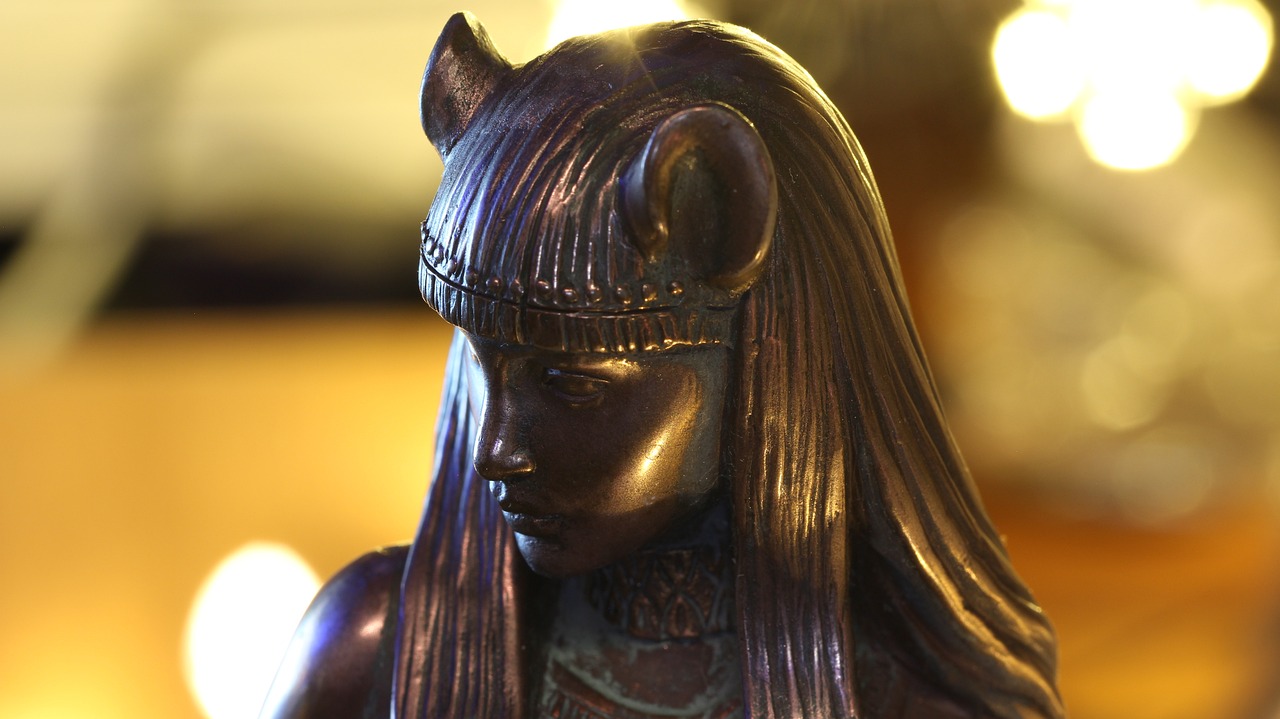The Goddess Bastet: Protector and Nurturer in Ancient Egypt
Bastet, a significant deity within Egyptian mythology, embodies the essence of home, domesticity, and guardianship. Symbolizing fertility, childbirth, and women’s secrets, she safeguarded households from malevolent spirits and illness, particularly those impacting women and children. Like many Egyptian deities, her influence extended into the afterlife, where she occasionally served as a guide for the deceased.
Bastet, often depicted as a nurturing figure, was also affiliated with the fiercer goddess Sekhmet, showcasing dual aspects of compassion and ferocity. Heralded as a protector of families, her popularity surged beginning in the Second Dynasty (c. 2890 – c. 2670 BCE), with a prominent cult centered in the city of Bubastis by the 5th century BCE.
The Significance of Bastet’s Name
Originally named B’sst, her title underwent transformations — from Ubaste to Bast and then Bastet. While the precise meaning remains debated, Geraldine Pinch suggests it could signify “She of the Ointment Jar,” linking her with healing and protective ointments. The Greeks recognized parallels between her and their goddess Artemis, asserting that, like Artemis’s brother Apollo, Bastet must also have a male counterpart, connecting her to Horus. This narrative further shaped her identity, though scholarly consensus on the name’s meaning is elusive.
Connections and Cultural Associations
Bastet was embraced widely across Egypt, captivating both genders. Her imagery evolved over time, shifting from a lioness-headed woman to a more domesticated form, representing a transition from a fierce protector to a cherished family companion. Pinch notes that Bastet possesses a dual nature of nurturing and vengeance, manifesting in texts associated with curses and disease. Despite her reverence, she garnered fear as demonstrated by her titles, such as “The Lady of Dread.”
Furthermore, her associations extended to Mau, the divine cat embodying Ra, and Mafdet, the goddess of justice, establishing Bastet as a pivotal figure in ancient feline deity lore. Her son, Maahes, is depicted as a lion-headed protector and showcases the continued legacy of feline guardianship.
In her artistic representations, Bastet frequently appears holding a sistrum, a musical instrument also linked to Hathor, hinting at shared traits between the two goddesses. While her gentle nature was celebrated, she remained formidable to those who engaged in wrongdoing, underscoring her complexity.
Narrative of Setna and Taboubu
The narrative from the Egyptian literature, “The Tale of Setna and Taboubu,” set in the context of Roman Egypt, illustrates how Bastet enforces justice. The protagonist, Prince Setna Khaemwas, commits transgressions by stealing a sacred book and pursuing a beautiful priestess named Taboubu, who ultimately embodies Bastet’s punishing aspect. The prince’s fate serves as a cautionary tale about the repercussions of disrespecting the divine, emphasizing the goddess’s role as a protector and punisher of those who offend sacred traditions.
The Worship of Bastet
Worship practices for Bastet flourished, with Bubastis being her main cult center. Renowned for its splendor, thousands flocked to the city to pay homage to her. Renowned historian Herodotus detailed the extravagant festivities dedicated to the goddess, highlighting dances, music, and a liberating atmosphere that contrasted with societal norms. During her festival, women were said to revel freely, symbolizing fertility and joyous liberation. This festival represented a significant cultural event, displaying reverence for a goddess widely adored across social strata.
Though there were many festivals honoring diverse gods, Bastet’s celebration stood out, revealing her importance in socio-religious contexts throughout Egyptian history. Her status remained high, not merely as a goddess of protection but as a beloved figure intertwined with the lives of ordinary Egyptians.
The Lasting Legacy of Bastet
The continued reverence for Bastet stems from her essential role in supporting women’s rights and maintaining the home. Her dual nature as both a fierce protector and a nurturing figure resonated with both men and women. Cats were especially valued in Egyptian society, serving practical roles in pest control while also providing companionship, further connected to Bastet’s persona.
During Cambyses II of Persia’s invasion in 525 BCE, he exploited the Egyptians’ veneration for animals, leveraging Bastet’s image to secure a peaceful surrender. The enduring affection for the goddess persisted, maintaining her significance even through the subsequent rise of Christianity.
As one of the most venerated deities, Bastet’s legacy reflects profound insights into the cultural, social, and religious tapestries of ancient Egyptian civilization, cementing her place as a protector, nurturer, and embodiment of the domestic sphere.



